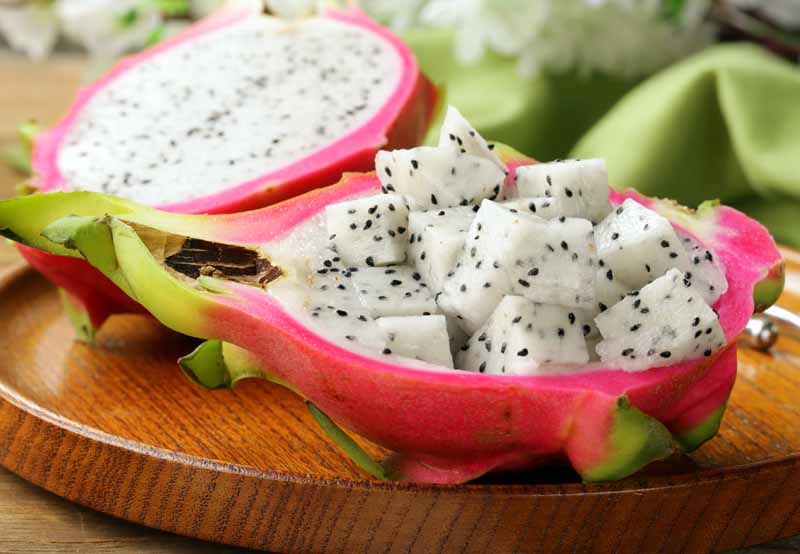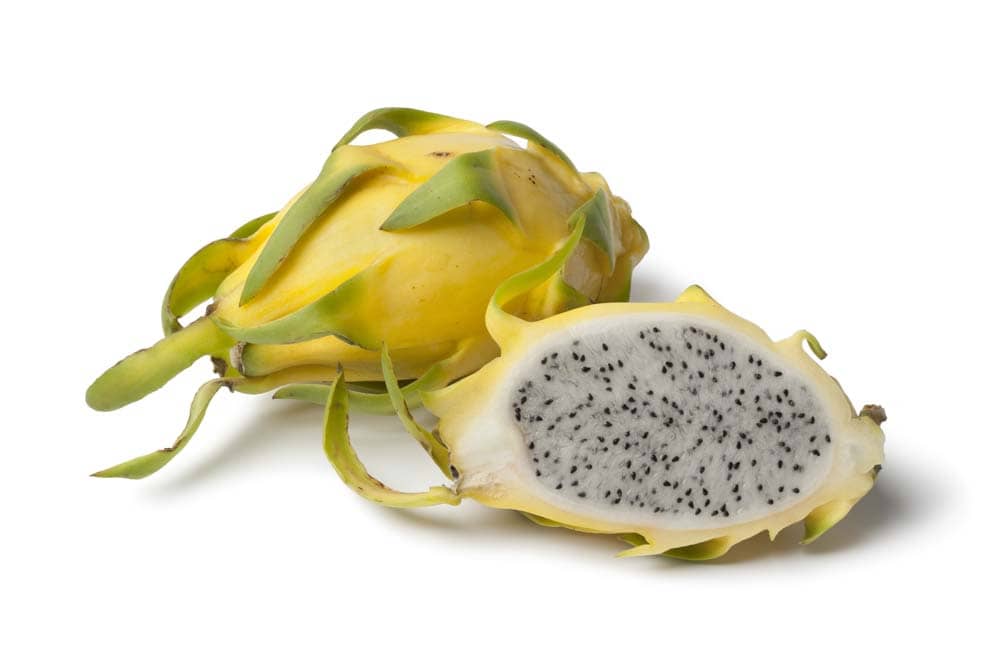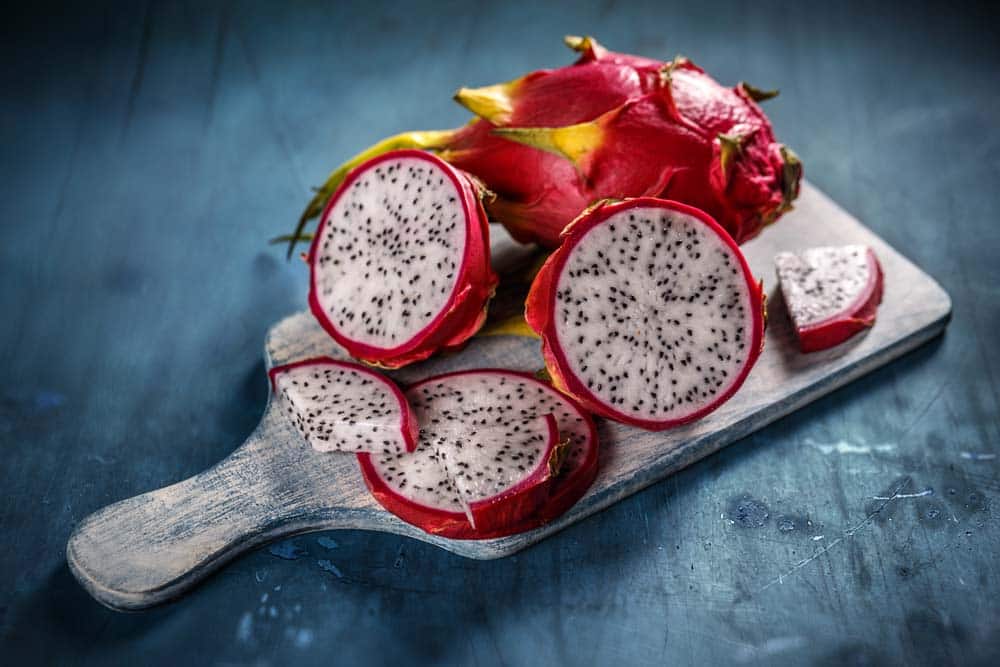The dragon fruit is one of the most delicious and refreshing fruits. Usually, it has different varieties which are cultivated worldly.
It is a type of fruit that you can also cultivate in your personal garden. And for this, you have to know well about Dragon Fruit Season.
But sometimes, people have a confusion about Dragon Fruit Seasonality. If you are one of those, then navigate this article to clear up things.
When Is Dragon Fruit In Season?

Here is the dragon fruit season or seasonality. Notably, the peak season of this refreshing dragon fruit is summer. The seasonality of various types of dragon fruits is mostly in the August and September months.
But, some of its varieties are also available in the months from November to February of the winter season.
However, various varieties of dragon fruit are available all-round the year. But, early fall and summer are the suitable seasons for the ripening of these exotic fruits.
Characteristics of Dragon Fruit
The dragon fruit is a tropical fruit having an oval or elliptical appearance. Its outer layer has pointy scales and that’s why it was named dragon fruit. And, its flesh colour varies in different types of this fruit. It may be red or white in colour having edible crunchy black seeds.
Dragon fruit also known as Pitaya, belongs to the Cactaceae family or climbing cacti. Mostly, these fruits are grown in Thailand, Vietnam, and Australia.
But this dragon fruit was firstly revealed in Central America. The plants of pitaya grow very well in dry areas having enough sunlight.
Pitaya plant is a long day plant and its flowers only bloom at night. Because of this fact, it is also known as moonflower or Lady of the Night.
It has large white flowers having its length of about 20cm. These plants require soil rich in organic materials for their proper growth.
What Does Dragon Fruit Taste Like?
The soft but dense fleshy pulp of dragon fruits having a subtle and bland taste somewhat like kiwi and melon. However, its natural sweetness is more delightful and refreshing.
The sweet taste of dragon fruit varies from species to species. Some species are sweetest to taste and many others are mild sweeter to taste. Its taste also depends upon the dragon fruit seasonality. In summer season, the taste of dragon fruit is much sweeter and ripened.
Most of the times, every person taste differently this luscious fruit. But collectively, its taste is sweeter with the crunch of seeds much like kiwi.
Read also in detail: Here’s What Does Dragon Fruit Taste Like
Several Varieties Of Dragon Fruit
A number of different varieties of dragon fruit are found worldwide. However, on the basis of their colour, they are classified into three major types. These variants may have different flesh colour or outer skin colour.
- Red pitaya having white flesh
- Yellow pitaya with mild yellow flesh
- And, red pitaya also having red flesh
The most usual and common type of dragon fruit is the red pitaya having white soft flesh. A thick scaly layer of red colour surrounds this white flesh.
Its flesh is quite sweeter and dense which provides a refreshing sensation in summer. This soft flesh also has edible black seeds which are studded in it.
It is a type of pitaya which is widely cultivated in tropical regions. And, the dragon fruit season of this type is early summer.
The yellow pitaya with mild yellow or white flesh is a unique type of dragon fruit. Its outer layer does not have spines like other usual varieties of pitayas.
Instead of spines, the yellow fleshy extensions growing outside and having green tips. And, its edible soft skin is usually translucent having black seeds. It is probably the sweetest variety of dragon fruit family. The dragon fruit seasonality of yellow pitaya is from October to December.
And the next type of dragon fruit is the red pitaya also having red fleshy skin. Its red thicker outer covering surrounds the red soft fleshy skin. The soft flesh protrusions also growing on the outer side with green tips.
Usually, their outer appearance greatly resembles to the white-fleshed type. But, the colour of edible flesh varies from each other. Its taste is sweet but not as sweet as white-fleshed variety has. The dragon fruit seasonality of this type is from June to September.
Overall Dragon Fruit Production

As I already elaborated that various varieties of dragon fruit are cultivated in different countries.
Besides this, several kinds of research also reveal that dragon fruit is worldly expanding. Dragon fruits are quite popular in Central Asia and Australia.
However, their production in countries like United States, Vietnam, and Mexico is also significant. There is a huge demand for dragon fruits just because of their nutritional benefits.
Interestingly, Vietnam is famous for its significant production of white-fleshed pitayas. That’s why Vietnam is a leading producer of pitayas now.
While the yellow pitayas are quite common in Israel and Colombo. The overall annual production of dragon fruit is almost 23 metric tons.
Essential Growth Factors Of Dragon Fruit Plant
One must consider various factors which are essential for the growth of the pitaya plant. Pitaya plant belongs to the family of climbing vines.
These plants grow well in dry places with the availability of sunlight. Nowadays, the cultivation of dragon fruits throughout the world indicates that they are highly adaptive to their environment.
Here’s are some factors that influence the growth of the pitaya plant. And, you can also grow it in your personal garden. Just you have to consider the following growth factors and then enjoy this stunning sweet fruit in your food.
Climate Aspect:
As you already know that pitaya plant is a tropical or subtropical plant. So, it requires a warm climate also having enough humidity.
This suitable climate is essential for the entire growth of pitaya plant. Not only this, but the ripening of dragon fruit is also dependent on the warm climate.
Because of this fact, dragon fruit seasonality is in summer or early fall.
Soil Quality:
If you want to grow the pitaya plant indoor or in your garden, then you have to prepare the soil first.
The proper growth of pitaya plant requires sandy loam soil which is drained very well. And, you have to maintain the pH of soil which is slightly acidic.
Also, you have to add organic matter to it to make it suitable for the growth of a pitayas. Under these conditions, one can grow these exotic fruits indoor with ease.
Irrigation:
Make sure the proper irrigation of soil to prepare it fully. Because these plants require plenty of water so, you have to maintain enough moisture. The lack of water can cause flower drop or produce immature fruits.
All the above mentioned factors contribute a lot to the proper growth of dragon fruits or plants.
In addition, these plants also require winter care. As the dragon fruit season is summer, so these are fully grown during the warm months of summer.
But, some of the varieties also bear fruits during winter. Thus, they require special winter care which is essential for their survival.
Firstly, to protect these plants from the severe cold environment, one must cover these plants with mulch or wood chips.
Secondly, keep the soil moist and drained with water. So, these can withstand severe dry weather.
Read also: When Is Star Fruit In Season?
How To Use Dragon Fruit In Food

Dragon fruit has numerous health and nutritional benefits. So, one must add these fruits to food as a healthy diet.
As I discussed its appearance earlier, it is an oval-shaped fruit having soft and refreshing flesh also with crunchy black seeds. Thus, its addition to several food recipes is delightful and stunning.
Simply, peel the outer skin of dragon fruit and then cut it into cubes. So, you can use these exotic cubes in a number of delicious foods like desserts, smoothies, fruit salads, and many more.
And, their use in fresh juices and vines is also wonderful. Definitely, its use in your diet would be refreshing and delightful.
Now, things are much clear about dragon fruit seasonality, its production, and care of pitaya plant in both summer and winter seasons. Let’s enjoy.
You May Also Like:
Are Almonds and Peaches Related to Each Other?
